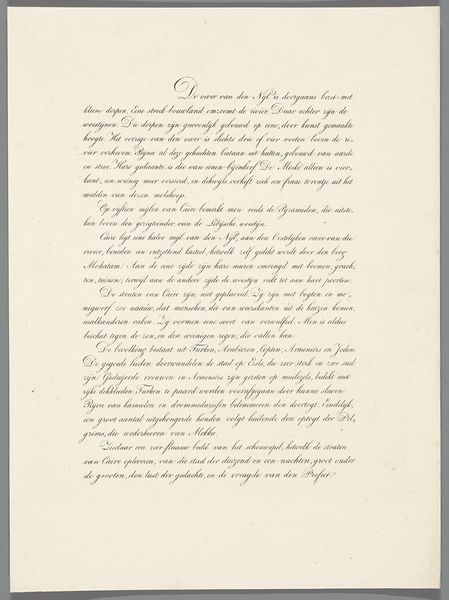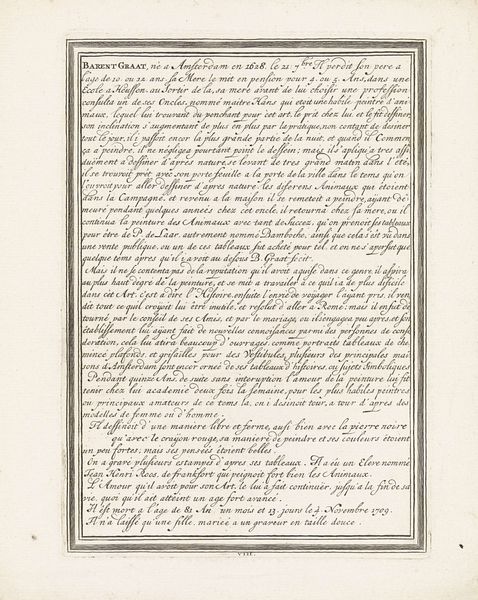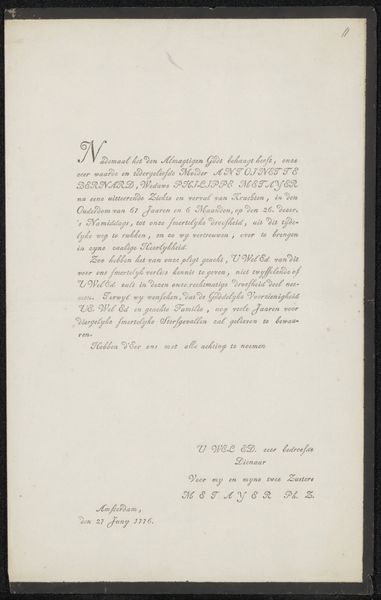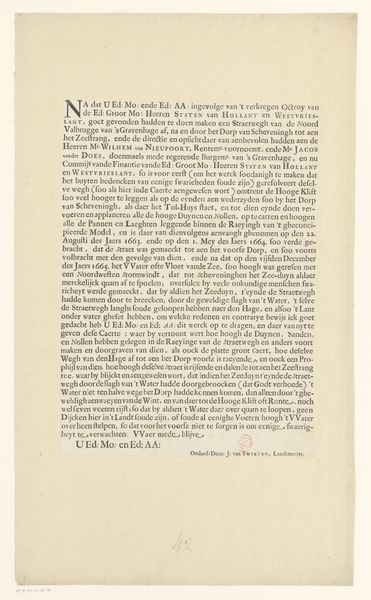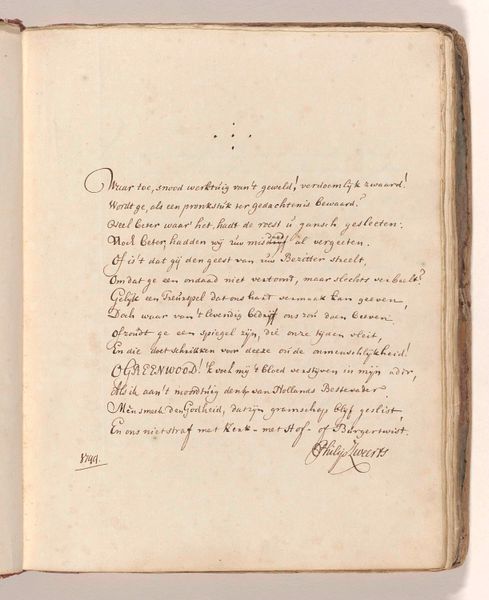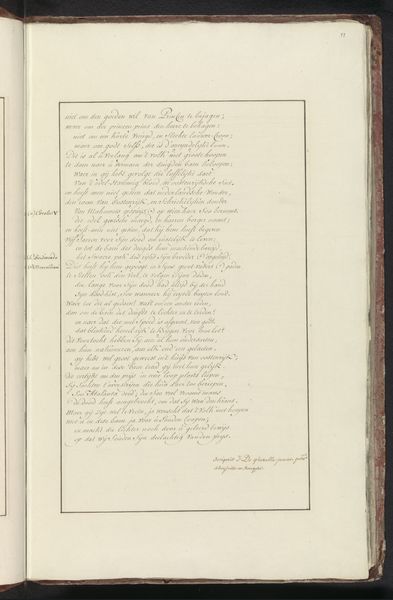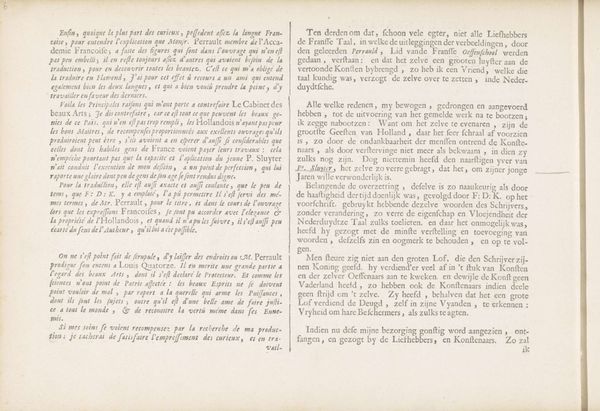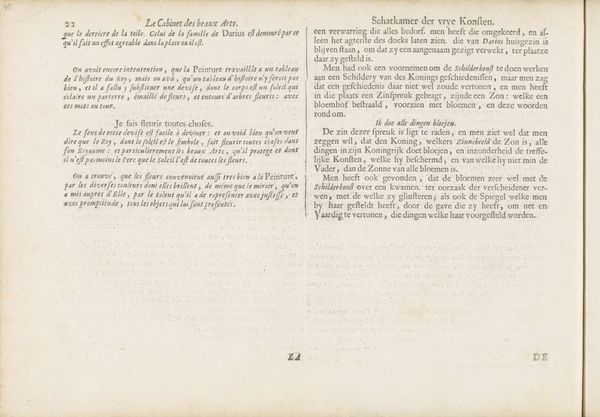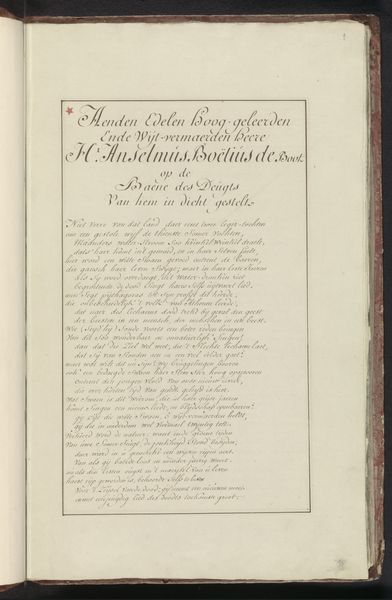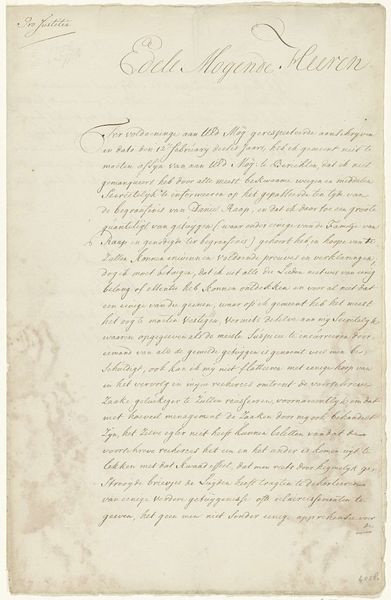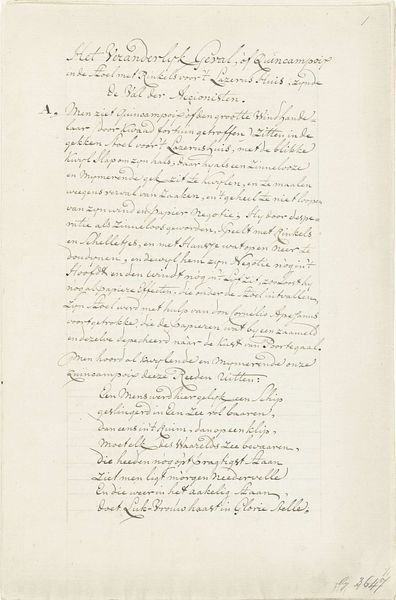
drawing, print, textile, paper, typography, ink, pen
#
drawing
#
script typography
# print
#
hand drawn type
#
textile
#
paper
#
personal sketchbook
#
typography
#
ink
#
hand-drawn typeface
#
ink colored
#
pen work
#
pen
Dimensions: height 370 mm, width 235 mm
Copyright: Rijks Museum: Open Domain
Editor: This is a fascinating piece—an obituary for Theodorus van Schelluynen, likely from 1776. It seems to be a print or drawing, perhaps with pen and ink on paper, maybe even textile given how it seems slightly woven, with very deliberate typography. What immediately strikes me is the intense formality and solemnity. What do you see in it? Curator: What interests me is the labor embedded in its production and its circulation within 18th-century society. This wasn't mass-produced in the modern sense; someone carefully drafted and potentially carved the lettering. The choice of paper, the ink used—these materials speak to the means available for communicating such news. It pushes beyond the typical boundaries we might draw between “art” and everyday craft. Who do you think was this C. van Ophoven? What was their role in production? Editor: Ah, I see! C. van Ophoven is mentioned at the bottom as “Executor” and as such maybe he produced a basic version to print further, maybe with help of someone. This makes me consider the division of labour, and even the literacy levels of the community it was circulated within. What was the paper for a death announcement like, do you think it’s for all social layers of the Amsterdam people? Curator: Precisely. Considering this object in terms of labor helps us to deconstruct its potential audience. We can ask, where might this announcement have been displayed or stored? Was it a keepsake, a public notice, or something else entirely? We begin to appreciate the way the material and methods shaped social practice. We might even research period paper qualities to get more clues about the level of the recipient. Editor: Thinking about it as a commodity being made and shared reframes it completely for me. I am now also thinking of the social history involved in this printing – thank you for making it so clear to me how we can consider art from different production means and social layers in art. Curator: Indeed. Looking closely at material processes unveils not only artistic intent but also societal structures that often get obscured in traditional art historical analysis. It's important to challenge art definitions with the daily life production means.
Comments
No comments
Be the first to comment and join the conversation on the ultimate creative platform.


